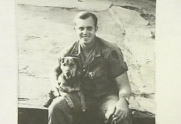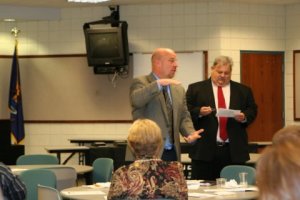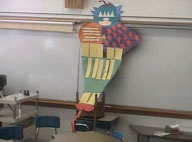This post is part of a series on integrating the McREL research on classroom instruction that works with videoconferencing.
Setting Objections: Generalizations
- The generating and testing of hypotheses can be approached in an inductive or deductive manner.
- Teachers should ask students to clearly explain their hypotheses and their conclusions.
Recommendations
Use these to improve your practice.
- Make sure students can explain their hypotheses.
- Use a variety of structured tasks to guide students through generating and testing hypotheses (Pitler, et al., 2007, p. 2002-2003).
Brainstorming for Videoconferencing
This is a strategy that you miss quite a bit of the depth if you only use the technology reference book. The handbook has much more detail. While you might think that generating and testing hypotheses is only done in science experiments (think of COSI’s Gadget Works program)… actually there are six types of student tasks, each of which makes for a great videoconference.
1. Systems Analysis
Have students predict what might happen if one part of the system changes. To do this students need to:
- What are the parts of the system? How does each part work?
- How do the parts affect one another?
- Pick a part of the system. What might happen if that part did something differently?
- Change the part to test your hypothesis or act it out or think it through (Marzano, et. al., 2001, p. 201)
These steps should be taught to students with content that is familiar to them.
What are some systems that student could analyze and share their analysis with each other via videoconference?
- A computer & it’s parts
- An ecosystem
- A business
- A transportation system
- A quadratic equation
- Can you think of more?
After explaining their analysis, students could ask each other:
- What did you learn as a result of doing the analysis?
- What did you learn as a result of listening to our analysis?
- What other system is this like? (metaphor)
2. Problem Solving
This strategy is particularly designed for unstructured problems – those with no obvious solution, no clearly goals or constraints – messy problems! To solve these problems students need to ask these questions:
- What am I trying to do?
- What things are in my way?
- What are some things I can do to get around these things?
- Which solution seems to be the best?
- Did this solution work? Should I try another solution? (Marzano et. al., 2001, p. 211).
What are some unstructured problems for various content areas? I think I want to look at our MI curriculum more to get better ideas. But here are a few:
3. Decision Making
To use this strategy, students need to understand criteria as value laden preferences, on which decisions are based. The process includes these steps:
- What am I trying to decide?
- What are my choices?
- What are important criteria for making this decision?
- How important is each criterion?
- How well does each of my choices match my criteria?
- Which choice matches best?
- How do I feel about the decision? Should I change any criteria and try again? (Marzano et. al., 2001, p. 221).
This format makes me think of Tammy Worcester’s decision making spreadsheet. It’s a great tool for following this process. The Marzano Handbook has a suggestion for using a similar graphic organizer to assist in decision making.
What topics could students practice decision making and then share their logic/rationale with another class?
- elections – national, state, and local
- current issues
- deciding on a major, career, or college
- the most important invention in your content area
- the most ____ character in 3-4 books (fill in the blank with a desired characteristic)
- what other ideas do you have?
4. Historical Investigation
This is done on events where there is no clear agreement on what exactly happened. There should not be any quick answers. Students will have to construct a possible resolution to conflicting scenarios. Students will need to be able to collect and analyze evidence to make a decision. They will probably need instruction on the difference between evidence and opinion and how to interpret different materials. Students could practice on a simple event in the local paper and make hypotheses about what really happened. They will need to follow these steps:
- What historical event do I want to explain?
- What do people already know about this event?
- What confuses people about this event?
- What suggestions do I have for clearing up these confusions?
- How can I explain my suggestions? Is there evidence that my scenario is plausible? (Marzano et. al., 2001, p. 232).
What topics could be used for this? These are from the Handbook (2001).
- Did George Washington really chop down a cherry tree?
- What happened to Amelia Earhart?
- What happened when the Titanic sank?
Clearly these would need to be topics that are included in the curriculum, and not just obscure little known events. A careful review of the curriculum for your history class may find more topics.
5. Experimental Inquiry
This isn’t just for science!! Inquiry can be used to describe observations, generate hypotheses, make predictions, and test them – in many content areas. Students will have to use their prior knowledge to make the predictions and then be able to apply their knowledge to new situations. The steps for this process are:
- Observe something and describe what occurred.
- Explain what was observed.
- Based on the explanation, make a prediction.
- Set up an experiment to test the prediction.
- Explain the results of the experiment and compare to your earlier explanation. (Marzano et. al., 2001, p. 232).
It’s easy to think of examples and scenarios for doing this with science – LEARNnco‘s programs, Science Seekers, etc. Imagine the students doing an experiment together; designing an experiment for the other class to do; comparing their solutions and results to an experiment.
6. Invention
Invention isn’t just creating intimidating big things! It’s also any solution for anything. “Isn’t there a better way to….” Students could brainstorm solution/inventions to improve a situation. The steps for this are:
- What do I want to make? What do I want to make better?
- What standards do I want to set for my invention?
- What is the best way to make a rough draft of my invention?
- How can I make my rough draft better?
- Does my invention meet the standards I have set?(Marzano et. al., 2001, p. 253).
The challenge with this strategy is that there aren’t any really good examples out there for regular content. Work needs to be done!
I think if I was in the classroom, I would want to try this about half way through the semester or school year, and ask students – what do you see around school that could be made better? Wouldn’t it be interesting to have classes share their results on this? Do we have time for this with state testing? Maybe not. Maybe that’s why there aren’t very many examples. Still, check out a few here: Generating and testing hypotheses & technology resources. This Invention at Play site is kind of cool. Could students share their little inventions with each other & share what they learned? What ideas do you have?
Any comments or thoughts? New ideas? Content you want to try these out with? Please comment!
Reference: Pitler, H., Hubbell, E. R., Kuhn, M., & Malenoski, K. (2007). Using technology with classroom instruction that works. Alexandria, VA: Association for Supervision and Curriculum Development.
Marzano, R. J., Norford, J. S., Paynter, D. E., Pickering, D. J., & Gaddy, B. B. (2001). A handbook for classroom instruction that works. Alexandria, VA: Association for Supervision and Curriculum Development.
![]()









 Today was my first ever attempt at an 8th grade version of
Today was my first ever attempt at an 8th grade version of 
